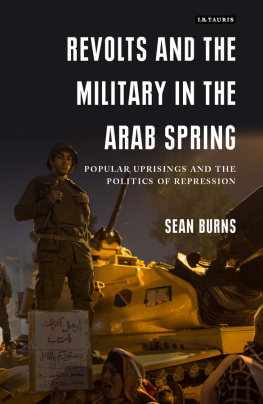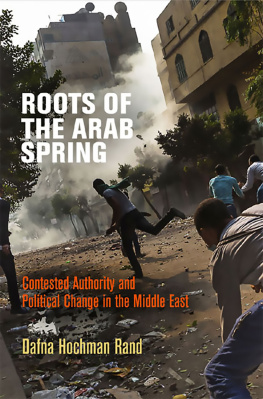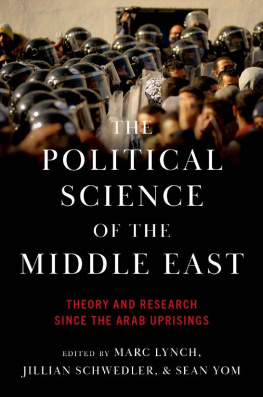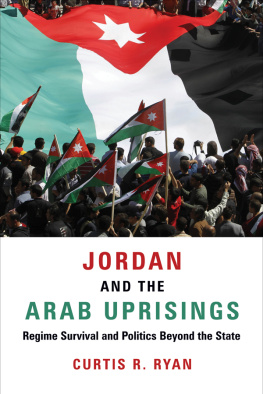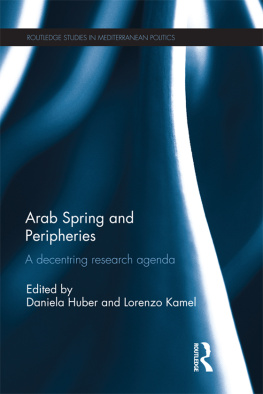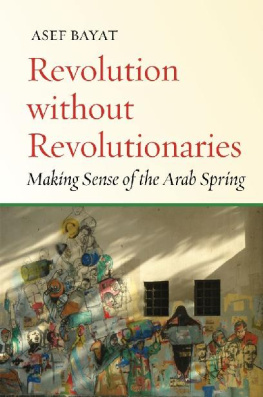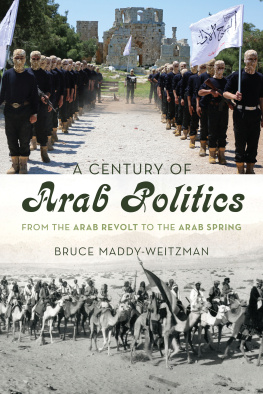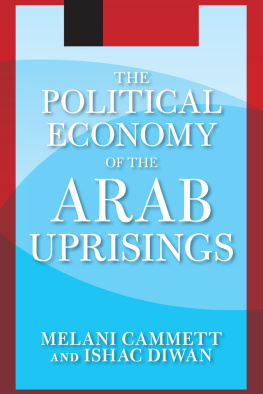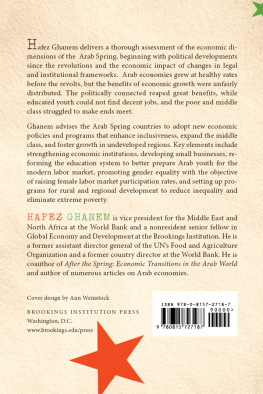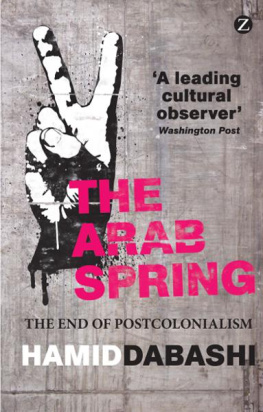Sean Burns received his PhD from Northwestern University in Illinois and is currently a visiting assistant professor at the College of William and Mary in Virginia. He taught in Qatar for five years and has done extensive travel and research in the Middle East. He has previously published in peer-reviewed journals and presented at conferences internationally on military structures and many other areas of Middle East politics and democratization.
After years of neglect, the study of civilmilitary relations in the Middle East has re-emerged as an important area of study in the wake of the 2011 Arab uprisings. This book successfully brings together significant theoretical insights about the roles that Arab militaries played in the uprisings alongside an impressive range of case studies. Grounded in a robust theoretical framework, the book offers us a rich trove of empirical data and historical background into what was and continues to be one of the defining dynamics of the Arab Spring uprisings.
Mehran Kamrava, Georgetown University,
Qatar and author of Inside the Arab State

Published in 2018 by
I.B.Tauris & Co. Ltd
London New York
www.ibtauris.com
Copyright 2018 Sean Burns
The right of Sean Burns to be identified as the author of this work has been asserted by the author in accordance with the Copyright, Designs and Patents Act 1988.
All rights reserved. Except for brief quotations in a review, this book, or any part thereof, may not be reproduced, stored in or introduced into a retrieval system, or transmitted, in any form or by any means, electronic, mechanical, photocopying, recording or otherwise, without the prior written permission of the publisher.
References to websites were correct at the time of writing.
Library of Modern Middle East Studies 199
ISBN: 978 1 78453 893 4
eISBN: 978 1 78672 319 2
ePDF: 978 1 78673 319 1
A full CIP record for this book is available from the British Library
A full CIP record is available from the Library of Congress
Library of Congress Catalog Card Number: available
For my mom,
who has been looking forward to this
Contents
List of Illustrations
Chart
MENA Coups by Decade
Tables
Military Structure and Outcomes of Peaceful Uprisings
Structural Features and Military Types
Distinctiveness & Subordination Characteristic
Internal Structure Characteristic
Military Response to Mass Mobilization
Post-breakdown Trajectories I Overthrow
Post-breakdown Trajectories II Military Split
Tunisias Military Structure
Tunisian Military Structure and Response to Mass Mobilization
Egypts Military Structure
Egyptian Military Structure and Response to Mass Mobilization
Bahrains Military Structure
Bahraini Military Structure and Response to Mass Mobilization
Libyas Military Structure
Libyan Military Structure and Response to Mass Mobilization
Syrias Military Structure
Syrian Military Structure and Response to Mass Mobilization
Yemens Military Structure
Irans Military Structure (in 1979)
Iranian Military Structure and Response to Mass Mobilization
Military Response to Mass Mobilization
Post-breakdown Trajectories I Overthrow
Preface
I was teaching in the Middle East during the Arab Spring. I taught at Northwestern University in Qatar in Doha from 2010 to 2015 and witnessed, and experienced, much of the hope, uncertainty, and disappointment from close by. I had students from all of the affected countries and taught them in classes, spoke to them in hallways and office hours, and ran large, school-wide meetings to discuss the upheaval as it was happening. I arrived in Doha in August of 2010 and one of the first classes I taught was Democracy and Democratization. To my surprise, many of the students expressed ambivalence about the value of democracy, its appropriateness for the Middle East, and its prospects in the Arab world. By late January of 2011, when the Arab Spring protests began to spread, democracy suddenly seemed possible and the conversations changed.
I continue to refer to the uprisings that began in Tunisia in December 2010 as the Arab Spring, rather than referring to them as the Arab Revolts or Arab Uprisings as some others do. Part of the reason is that most historical Springs, such as the Prague Spring or the Spring of Nations in Europe in 1848, also ended with conflict, repression, and promises unfulfilled. The many unhappy outcomes of the Arab Spring align it with those historical Springs, rather than running counter to them. The other reason is that, from my vantage point in Qatar, the period was marked by hope and optimism. Despite the names activists gave to their protests, such as the Day of Rage, once the protesters took control of the streets or squares, the demonstrations were marked by hopefulness, non-violence, and camaraderie. The students in my classes in Doha at the time were gripped by excitement, more than anger. There was uncertainty and worry, of course, but it felt like a time of optimistic possibility. At least from my view, watching my students experience it and helping them analyze it, it felt more like a spring than a revolt. Quickly in some places, and over time in others, the mood turned. Bahrain caused divisions, Syria fell into civil war, early optimism in Yemen and Libya were exhausted as the transitions turned into conflict and Egypts revolution stagnated and turned sour. Only in Tunisia did the outcome seem to be going well, and my students from Tunisia remained inquisitive and engaged, but Tunisia is a small country and they were outnumbered by the students from places that had seen less positive outcomes.
I remain hopeful, however. The Arab Spring showed that a peaceful uprising could capture the regional imagination and spread like wildfire. It showed that autocrats in the Middle East were willing to go to great lengths to remain in power, but institutions like the military could act strategically and potentially push positive outcomes. It also showed the positive impact a strong civil society and media could have. It empowered the youth of the Middle East in ways that will be hard to undo, and it revealed the complexity of the region to people outside of the Middle East, challenging simplistic views many held. I also take solace from the fact that sometimes democratization takes more than one try. Overthrowing a government creates a new competition between the contending groups in society. If they cannot manage their conflict and work toward democratic ends, military coup or fragmentation are possible. But it is possible for politicians and civil society actors to learn from their mistakes and do better the next time.
It is in this vein that I wrote this book. At the time of the uprising I was working on a dissertation about non-democratic revolutions in the Middle East, including the Islamic Revolution in Iran and the Baath Revolutions in Syria and Iraq. However, I could not find the key to unlock the project. That came with the fall of President Zine al-Abidine Ben Ali in Tunisia and the restraint of the Egyptian Army. It was always clear that military decisions were important in the outcome of democratization and revolution, but the outcomes in Tunisia and Egypt, compared to Iran in 1979, provided the key to understand exactly how. The book looks at this in detail. It looks at the role of the military in democratization and revolution and, while it comes to some disappointing conclusions, it shows that democracy is achievable in the region and gives insight into how political actors can make it more likely. It also serves as a primer on the Arab Spring for those unfamiliar with many of the cases. It provides historical background on the political development of the countries and looks at the six major Arab Spring cases throughout the uprising and transition process, into mid-2017. The example of revolutionary Iran provides another path, one that did not occur during the Arab Spring, but which is essential to understanding the possible outcomes of popular uprisings. Despite the pitfalls of popular uprisings and transitions, and the many troubling outcomes of the Arab Spring, I remain hopeful about the future of democratization in the Middle East and hope this book provides insights and explanations that students, analysts, activists, and interested parties find valuable.


